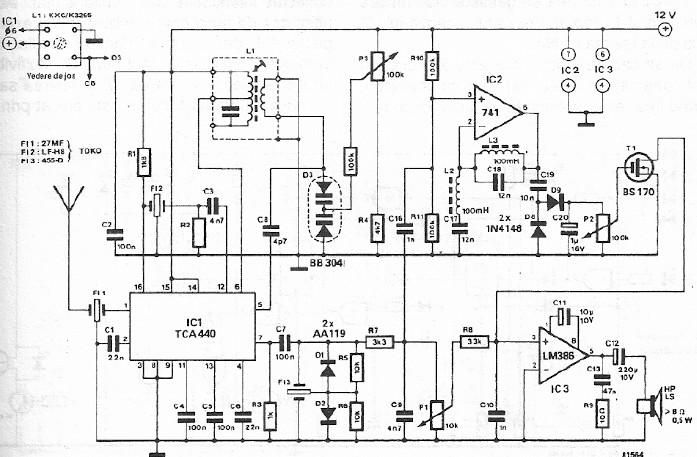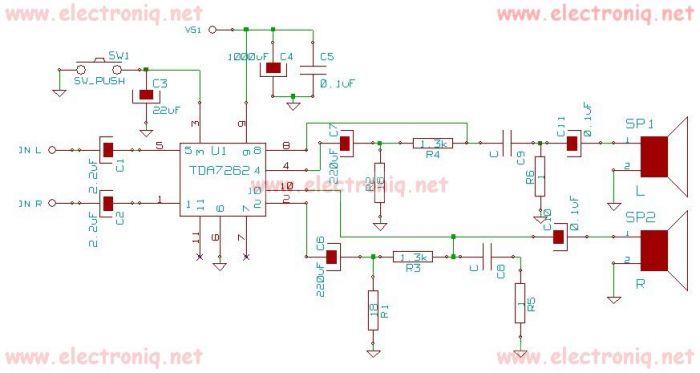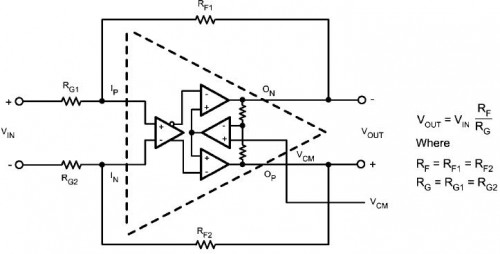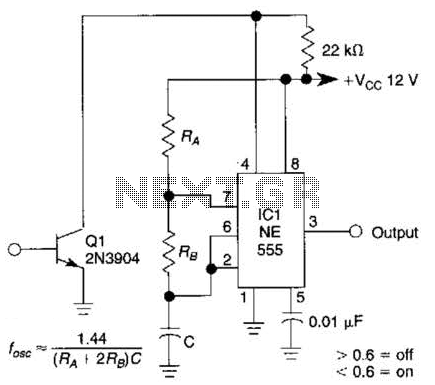
A voltage inverter circuit
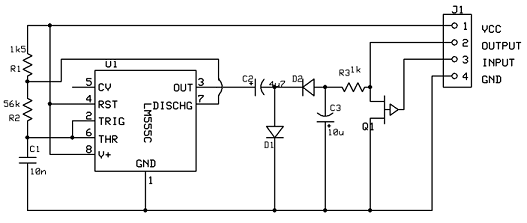
Our programmable MP3 player has an interface to an LCD with a HD44780 controller. These are alphanumeric LCDs with one to 4 lines of text and 16 to 40 characters per line. However, these LCDs (and LCDs in general) exist in two varieties: those that require a positive LC-driving voltage and those that need a negative LC-driving voltage. The H0420 (the programmable MP3 player that I referred to earlier) only supports LCDs with a positive LC-driving voltage, because it takes its power directly from a common (asymetric) mains power adapter.
The programmable MP3 player, designated as H0420, integrates an interface for connecting to alphanumeric LCDs utilizing the HD44780 controller. This controller is widely recognized for its versatility in driving LCD displays, accommodating configurations that range from 1 to 4 lines, with character capacities varying between 16 and 40 characters per line.
The critical distinction in LCD types lies in their voltage requirements for operation. LCDs can be categorized into two groups based on their driving voltage: those that necessitate a positive liquid crystal driving voltage and those that operate on a negative voltage. The H0420 model is specifically designed to interface with LCDs that require a positive voltage. This design choice is influenced by the power supply architecture of the device, which employs a common asymmetric mains power adapter.
The interface circuitry for the LCD typically includes a microcontroller that communicates with the HD44780 using an appropriate protocol, often via a parallel data bus. This connection allows for the transmission of commands and data to control the display, such as initializing the display, writing text, and adjusting cursor positions. The power supply circuit within the H0420 ensures that the required positive voltage levels are maintained for the LCD operation, while also providing necessary filtering and regulation to enhance performance and reliability.
In summary, the H0420 programmable MP3 player’s LCD interface adheres strictly to the specifications of the HD44780 controller and is optimized for use with positive LC-driving voltage LCDs, ensuring compatibility and operational efficiency within its designated power supply framework.Our programmable MP3 player has an interface to an LCD with a HD44780 controller. These are alphanumeric LCDs with one to 4 lines of text and 16 to 40 characters per line. However, these LCDs (and LCDs in general) exist in two varieties: those that require a positive LC-driving voltage and those that need a negative LC-driving voltage. The H0420 (the programmable MP3 player that I referred to earlier) only supports LCDs with a positive LC-driving voltage, because it takes its power directly from a common (asymetric) mains power adapter.
🔗 External reference
The programmable MP3 player, designated as H0420, integrates an interface for connecting to alphanumeric LCDs utilizing the HD44780 controller. This controller is widely recognized for its versatility in driving LCD displays, accommodating configurations that range from 1 to 4 lines, with character capacities varying between 16 and 40 characters per line.
The critical distinction in LCD types lies in their voltage requirements for operation. LCDs can be categorized into two groups based on their driving voltage: those that necessitate a positive liquid crystal driving voltage and those that operate on a negative voltage. The H0420 model is specifically designed to interface with LCDs that require a positive voltage. This design choice is influenced by the power supply architecture of the device, which employs a common asymmetric mains power adapter.
The interface circuitry for the LCD typically includes a microcontroller that communicates with the HD44780 using an appropriate protocol, often via a parallel data bus. This connection allows for the transmission of commands and data to control the display, such as initializing the display, writing text, and adjusting cursor positions. The power supply circuit within the H0420 ensures that the required positive voltage levels are maintained for the LCD operation, while also providing necessary filtering and regulation to enhance performance and reliability.
In summary, the H0420 programmable MP3 player’s LCD interface adheres strictly to the specifications of the HD44780 controller and is optimized for use with positive LC-driving voltage LCDs, ensuring compatibility and operational efficiency within its designated power supply framework.Our programmable MP3 player has an interface to an LCD with a HD44780 controller. These are alphanumeric LCDs with one to 4 lines of text and 16 to 40 characters per line. However, these LCDs (and LCDs in general) exist in two varieties: those that require a positive LC-driving voltage and those that need a negative LC-driving voltage. The H0420 (the programmable MP3 player that I referred to earlier) only supports LCDs with a positive LC-driving voltage, because it takes its power directly from a common (asymetric) mains power adapter.
🔗 External reference

